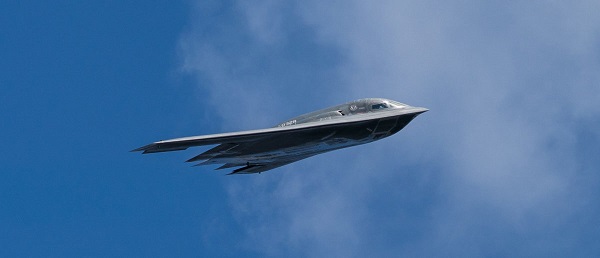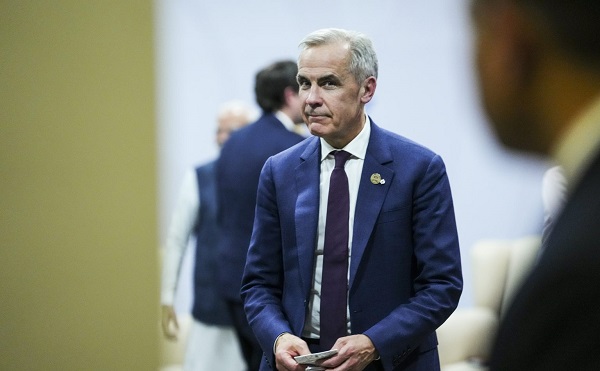Travel
Todayville Travel: Spring in Italy – Riccione and the Tuscan Hills

Second in the two-part series ‘Spring in Italy’.
“My head was down, focused on my churning bicycle pedals and the relentless climb up a twisting cobblestone road. What was I doing here? I’m not even fond of biking.”
The Most Serene Republic of San Marino is located smack dab in the middle of Italy. At 62 sq. km. it is one of the smallest nations in the world. Although only a few dozen kilometres from Italy’s Adriatic Coast, San Marino’s summit is almost 800 meters above sea level. And crowning this mountainous micro-state is the medieval Fortress of Guaita. My destination.
But I wasn’t looking up. My head was down, focused on my churning bicycle pedals and the relentless climb up a twisting cobblestone road. What was I doing here? I’m not even fond of biking.
I needed the exercise. We had been in Italy for almost two weeks and had yet to actually earn any of the fabulous meals we had devoured.
It was a tough three-hour slog to San Marino’s pinnacle – but an easy glide back down to the coastal town of Riccione, and the Belvedere Hotel where we were ensconced for four nights. The Belvedere is a “biker’s” hotel. Marina Pasquini, the proprietress, is a dynamic effervescent woman. Marina exudes the qualities of both caring mother and astute businesswoman. Her staff love her – and feed off her magnetism. This osmotic energy carries through to the guests – who are treated like family.
Marina is a wonderful cook. So after a gruelling 70-kilometre ride, I felt justified in accepting a second helping of her traditional Friday night paella. Marina is also an observant woman (I wouldn’t try stealing any silverware from the Belvedere). When we checked in she noted I was toting a ukulele:
“Would you like to play at lunch this afternoon? You’ll be biking up to a farmhouse and winery in the hills.”
“I can’t carry the ukulele on my bicycle,” I replied.
“Don’t worry, we can bring it up for you,” she said happily. “It will be wonderful.”
How could I say no?

Marina and her Friday night paella
On the ride up my wife Florence had bike problems. Her chain kept falling off. Our guide Dani-boy was nonchalant and pleasantly attended to each messy repair. When we arrived at the farmhouse his hands were black with grease.

Thanks Dani!
During lunch I scoured my brain for an appropriate tune to entertain a group of bicycle aficionados in the Rimini hills of Italy. After a four-course meal, a sweet dolce and plenty of vino di casa, the group was rambunctious. I tentatively plinked the ukulele.

An exhausted Gerry enjoys the view from the summit of San Marino
My truncated version of Dean Martin’s “That’s Amore” went over well.
Then I recounted Florence’s bike chain maladies by singing (with apologies to the Beatles):
“Chain, my baby’s got a tangled-up chain,
And it ain’t the kind, that you can cl-e-e-e-an,
But Dani-boy, fixed her chain for me. Yeah.”
The crowd went wild. Bike enthusiasts can be real nerds.
Dani-boy had a genuine tear in his eye. Despite their hot-blooded temperament, Italians can be surprisingly sentimental.
On our last Belvedere morning, as we checked out, the skies opened up. Disheartened cyclists, decked out in jerseys from around the world, sat and scanned the dreary sky. The ride was off for the day. Rain, steep narrow roads, zany Italian drivers and over-enthusiastic bicyclists do not mix well.
Marina was in the foyer to bid us arrivederci, offering a genuine hug – and a request that we soon return.
We were off to Tuscany, the final leg of our month-long stay in Italia. The GPS indicated that our AirBnb in Lucca was three hours away. But as per our usual modus operandi we took the road less travelled and turned what should have been a short jaunt into a seven-hour odyssey through the twisting narrow country roads and unsurpassable beauty of Tuscany.

The road less traveled
I enjoyed driving in Italy. Despite their crazy reputation, I found Italian drivers really get it (unlike some folks piloting cars on Alberta’s highways). I survived a month driving in Italy without incident: no fender-benders on narrow cobblestone streets, no roundabout collisions – and not one Italian offered a gesticulation as to where I might go and procreate.

However… it will be a miracle if the post office doesn’t eventually deliver a slew of photo-radar tickets and one-way street infractions. It is not an understatement to suggest that compliance with Italian driving laws is impossible. And Italian roads require super-human navigating skills. Florence (and our GPS) performed admirably – we were lost fewer than a dozen times.
When we arrived in Lucca our hostess met us outside the town walls, helped us park and escorted us to her lovely apartment in the heart of the Old City. (Our AirBnb experience throughout Italy was amazing. Our hosts were uniformly friendly, helpful – and available. Many even stocked the fridge with Italian delights for our arrival.)

Lucca
One fine afternoon we signed up for a wine-tasting tour in the famous Brunello region of Montalcino, near Sienna. En route we passed vineyard after vineyard, interrupted only by ancient olive groves. And it seemed every Tuscan hill was topped by an alluring fairytale-like village – with stone spires guarding the verdant fields of Italian spring.

“Mario loves making vino, his passion for sixty years. He has a certain – pardon my French – joie de vivre.”
Mario Ciacci is the octogenarian who founded and still oversees Abbadia Ardenga winery – although these days Mario’s role seems limited to entertaining customers, dancing with the lady guests – and sipping a little of his own beautifully-aged Brunello. He proudly walked us through the vintner’s process – and his priceless cellar – before serving us a simple lunch coupled with a multitude of his Abbadia vintages.

Mario Ciacci woos the ladies – when not making wine

Mario loves making vino, his passion for sixty years. He has a certain – pardon my French – joie de vivre. Mario is also a seasoned salesman; in addition to my traffic tickets, any day now we’re expecting an overseas shipment of Brunello wine.
After three nights in Lucca and four in Sienna we moved on to Orvieto for our final few Italian nights. In each of these towns the itinerary was simple: explore the narrow, confusing streets of the city core for a day, then hop in the car and tour the surrounding countryside for a couple of days.

Ponte Della Madallena near Lucca
“The gold-gilded façade of the Duomo is spectacular at sunset.”
All of these walled cities have their unique character but Orvieto is perhaps the most charming – and interesting. Built atop a flat butte of volcanic tuff, the town has remained impregnable for millennia. Its high walls provide a natural defense that could not be breached. The city was also immune to enemy siege. Water was drawn from the ingeniously designed well of San Patrizio and food literally flew in through the windows: the people farmed pigeons. Thus both food and water were readily available without leaving the protection of the fortress.
Orvieto is home to one of Italy’s most striking Gothic cathedrals. The gold-gilded façade of the Duomo is spectacular at sunset. And beneath the streets an ancient labyrinth of tunnels was carved into the tuff, designed for quick escape. (Perhaps flight from this siege-proof city would have been necessary had Orvieto been infiltrated by stool pigeons?)

Duomo in Orvieto
We’ve been home for some time now and the traffic tickets have yet to arrive – but I take solace in the fact that when they do there will be a hearty glass of Brunello at hand to ease the pain.
If you go: The Belvedere Hotel specializes in hosting bike enthusiasts from around the world.
Gerry Feehan QC practised law in Red Deer for 27 years before starting his second life as a freelance travel writer and photographer. He says that, while being a lawyer is more remunerative than travel writing, it isn’t nearly as much fun. When not on the road, Gerry and his wife Florence live in Red Deer and Kimberley, BC. Todayville is proud to work with Gerry to re-publish some of his most compelling stories from his vast catalogue developed over more than a decade of travel.

Gerry Feehan
Enjoy an excellent adventure in Texas. Click below.
International
America first at the national parks: Trump hits Canadians and other foreign visitors with $100 fee

Foreign visitors heading to America’s crown-jewel national parks will soon face a steeper bill, as the Trump administration moves to prioritize U.S. taxpayers who already bankroll the system. The Department of the Interior announced Tuesday that starting in 2026, non-residents will be charged an additional $100 at 11 of the country’s busiest parks — a list that includes the Grand Canyon, Yellowstone, Yosemite, Acadia, Everglades, and other iconic destinations. The change accompanies a sharp increase in the cost of an annual all-parks pass for foreign tourists, which will jump to $250, more than triple the current rate. Americans and permanent residents will continue paying $80.
Interior Secretary Doug Burgum framed the policy as a straightforward matter of fairness. “President Trump’s leadership always puts American families first,” he said, arguing that U.S. households already subsidize the National Park System and deserve affordable access while international tourists contribute “their fair share” to the upkeep and expansion of the park network. It’s a pitch that aligns with Trump’s broader push to restore what he calls a sense of ownership and pride in the country’s natural treasures, and to make sure the burden of maintaining them doesn’t fall solely on American families.
We’re making it easier & more affordable for Americans to experience the beauty & freedom of our public lands!
In 2026, we’re launching:
– America-first pricing 💵
– Digital passes 📱
– Patriotic pass designs 🇺🇸
– Expanded motorcycle access 🏍️
– 5 additional fee-free days 🗓️ pic.twitter.com/a2SvHNBdSP— Secretary Doug Burgum (@SecretaryBurgum) November 25, 2025
The National Park Service recorded nearly 332 million visits in 2024 across its 63 designated national parks — a staggering figure that has placed heavy pressure on trails, facilities, and staff. While some parks charge per-vehicle fees and others by the individual, the $80 “America the Beautiful” pass covers the holder and all passengers or up to four adults. Under the new rules, foreign visitors who purchase the $250 annual pass will avoid the extra $100 at the 11 high-traffic parks, but all other overseas travelers will pay the surcharge at the gate.
The administration says the approach follows a July executive order from President Trump, aimed at preserving parkland “for American families” by ensuring those who don’t support the system through taxes help shoulder the cost of its growing maintenance needs. Burgum’s department also highlighted that U.S. visitors will continue to enjoy “patriotic fee-free days” tied to national observances — including President’s Day, Veterans Day, and Flag Day, which coincides with Trump’s birthday — while foreign visitors will pay full freight.
The move is expected to generate significant revenue from international tourism while reinforcing a message that has become central to Trump’s agenda: America’s natural wonders belong first to the taxpayers who fund them, and protecting access for those families comes before subsidizing the travel of visitors from abroad.
Business
New airline compensation rules could threaten regional travel and push up ticket prices

New passenger compensation rules under review could end up harming passengers as well as the country’s aviation sector by forcing airlines to pay for delays and cancellations beyond their control, warns a new report published this morning by the MEI.
“Air travel in Canada is already unaffordable and inaccessible,” says Gabriel Giguère, senior public policy analyst at the MEI. “New rules that force airlines to cover costs they can’t control would only make a bad situation worse.”
Introduced in 2023 by then-Transport Minister Omar Alghabra, the proposed amendment to the Air Passenger Protection Regulations would make airlines liable for compensation in all cases except those deemed “exceptional.” Under the current rules, compensation applies only when the airline is directly responsible for the disruption.
If adopted, the new framework would require Canadian airlines to pay at least $400 per passenger for any “unexceptional” cancellation or delay exceeding three hours, regardless of fault. Moreover, the definition of “exceptional circumstances” remains vague and incomplete, creating regulatory uncertainty.
“A presumed-guilty approach could upend airline operations,” notes Mr. Giguère. “Reversing the burden of proof introduces another layer of bureaucracy and litigation, which are costs that will inevitably be passed on to consumers.”
The Canadian Transportation Agency estimates that these changes would impose over $512 million in additional costs on the industry over ten years, leading to higher ticket prices and potentially reducing regional air service.
Canadians already pay some of the highest airfares in the world, largely due to government-imposed fees. Passengers directly cover the Air Travellers Security Charge—$9.94 per domestic flight and $34.42 per international flight—and indirectly pay airport rent through Airport Improvement Fees included on every ticket.
In 2024 alone, airport authorities remitted a record $494.8 million in rent to the federal government, $75.6 million more than the previous year and 68 per cent higher than a decade earlier.
“This new regulation risks being the final blow to regional air travel,” warns Mr. Giguère. “Routes connecting smaller communities will be the first to disappear as costs rise and they become less profitable.”
For instance, a three-hour and one minute delay on a Montreal–Saguenay flight with 85 passengers would cost an airline roughly $33,000 in compensation. It would take approximately 61 incident-free return flights to recoup that cost.
Regional air service has already declined by 34 per cent since 2019, and the added burden of this proposed regulation could further reduce connectivity within Canada. It would also hurt Canadian airlines’ competitiveness relative to U.S. carriers operating out of airports just south of the border, whose passengers already enjoy lower fares.
“If the federal government truly wants to make air travel more affordable,” says Mr. Giguère, “it should start by cutting its own excessive fees instead of scapegoating airlines for political gain.”
You can read the Economic Note here.
* * *
The MEI is an independent public policy think tank with offices in Montreal, Ottawa, and Calgary. Through its publications, media appearances, and advisory services to policymakers, the MEI stimulates public policy debate and reforms based on sound economics and entrepreneurship.
-

 Business20 hours ago
Business20 hours agoRecent price declines don’t solve Toronto’s housing affordability crisis
-

 Bruce Dowbiggin2 days ago
Bruce Dowbiggin2 days agoSometimes An Ingrate Nation Pt. 2: The Great One Makes His Choice
-

 National2 days ago
National2 days agoMedia bound to pay the price for selling their freedom to (selectively) offend
-

 Daily Caller19 hours ago
Daily Caller19 hours agoTech Mogul Gives $6 Billion To 25 Million Kids To Boost Trump Investment Accounts
-

 C2C Journal2 days ago
C2C Journal2 days agoLearning the Truth about “Children’s Graves” and Residential Schools is More Important than Ever
-

 Business2 days ago
Business2 days agoWhy Isn’t There a Cure for Alzheimer’s Disease?
-

 armed forces2 days ago
armed forces2 days agoGlobal Military Industrial Complex Has Never Had It So Good, New Report Finds
-

 Artificial Intelligence1 day ago
Artificial Intelligence1 day agoThe Emptiness Inside: Why Large Language Models Can’t Think – and Never Will













